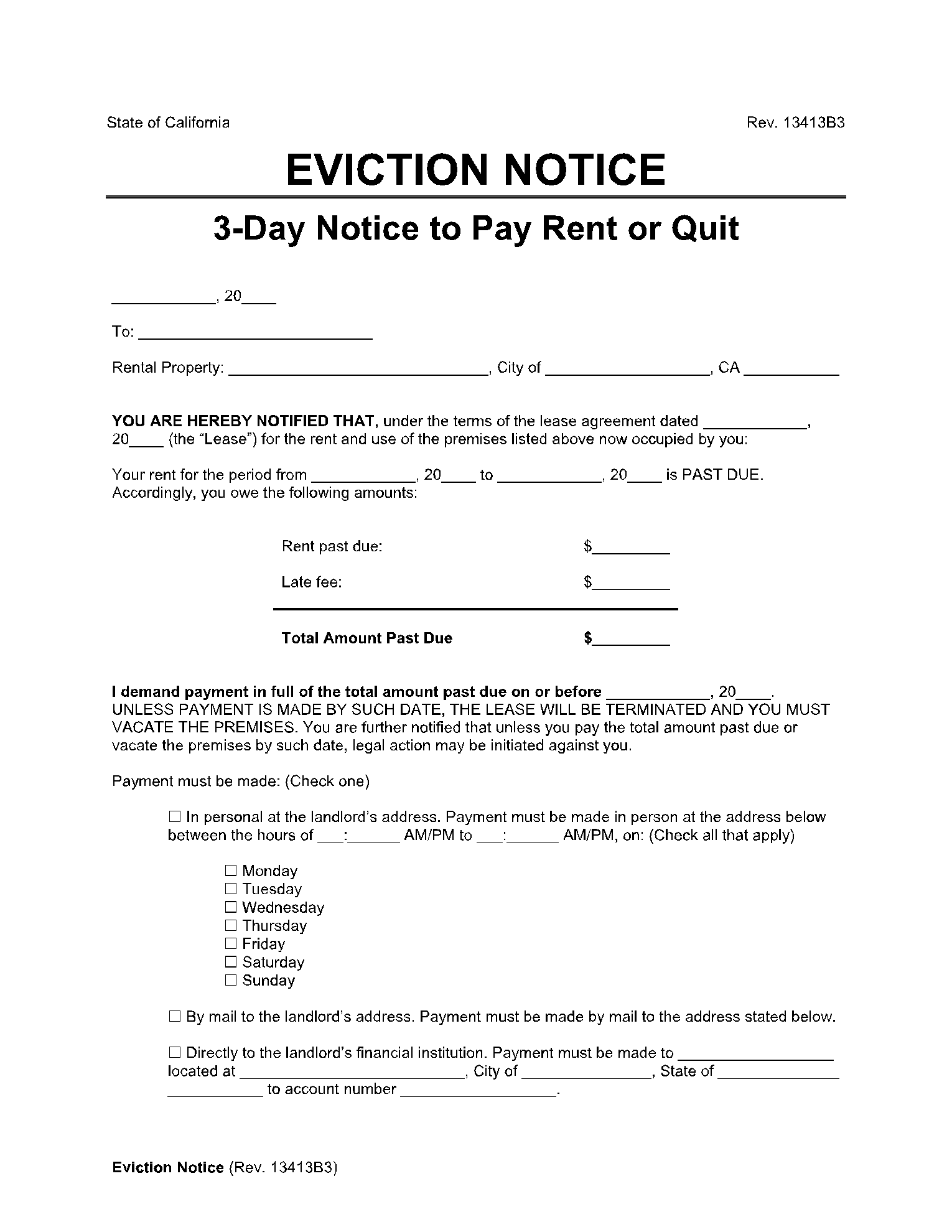A landlord uses a California 3-day notice to notify a tenant when they have violated the lease agreement by not paying the rent on time. When this happens, the tenant has three days to pay the rent or face legal consequences.
As per the laws of California, the 3-day notice to pay rent or quit must accurately state the due rent. It should also include the name, address, and other contact details of the person/company the tenant will have to pay. If the tenant receives the notice, the landlord must do so during proper hours. If the tenant is unavailable, they can serve the notice at the tenant’s place of work.
Can a 3-Day Notice be Emailed in California?
No, a 3-day notice form cannot be emailed in California. If the 3-day notice to pay or quit does not belong to a residential tenancy, then the tenant cannot send a 3-day notice to pay or quit form as an email. The California Code of Civil Procedure cannot recognize Service by email as an effective service. The landlord can serve the notice to the tenant in person at the residential property or their place of work if the tenant is unavailable at home due to whatever the reason may be.
In case the tenant cannot accept personal deliveries at the address in question, the landlord can send them by certified mail. The landlord can use the receipt as proof of delivery. If the tenant sends the rent via mail, the court believes that the postmark may have the received date noted. The tenant can pay directly to the financial institution if it is within 5 miles of the unit. They possess the address and account number of the financial institution.
What Makes a 3-Day Notice Defective?
A 3-day notice to quit could be deemed defective if an incorrect amount for rent is demanded. It applies even when the landlord asks for late fees while it has no reference in the lease agreement. In addition, it extends if a proper grace period is not provided to the tenant. At times, landlords may try to plan to take evictions independently. And in turn, they may not follow proper legal procedures when working on the notice form. This then creates a flawed document that may not help the landlord to legally suit the eviction process.
The new legislation states that during a defective 3-day notice, landlords can amend the notice. They can continue eviction proceedings after revising the notice. A defective notice will only cause further trouble for the landlord in question. Further, it may lead to dismissal that incurs more costs. This often ends up becoming thrice the amount that has not been paid in damages. complications. If you are a landlord and wish to see your troublesome tenant leave, it is best to get proper legal advice on proceeding with the matter.You can get this along with the payment that you may have to make to the tenant for the legal
How Long Does the Eviction Process Take in California?
After the landlord serves the 3-day notice to the tenant in California, the best scenario that could happen is that the tenant would peacefully move out and hand over the keys of the property back to the landlord. Therefore, the tenant will have to leave the property in three days, ideally. On the other hand, the tenant could also not respond to the lawsuit. This can happen even if they have to file for an unlawful detainer lawsuit. Plus, the tenant can do it even after the processing of the lawsuit and serving it on time. In such cases, the landlord could expect to get possession of the property after serving the 3-day notice after about 16 days.
Conclusion
Eviction notices come with different rules, and different states and cities have varying legislation. It is crucial that the 3-day notice you acquire follows all the rules. It should also involve all the details you require. Explore the various 3-day notice templates available and take your pick.
